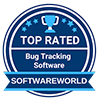New Trends in Demand Management: ZenTao Enhances Corporate Competitiveness
Original
-
 ZenTao Content
ZenTao Content -
 2025-11-24 21:00:00
2025-11-24 21:00:00 -
 4
4
According to the latest CHAOS Report released by the Standish Group, over 60% of IT projects fail to meet delivery deadlines, while nearly 50% exceed their allocated budgets. Analysis of these "delays" and "cost overruns" reveals a strikingly consistent root cause: ineffective demand management. These challenges manifest most prominently in requirements gathering, communication, change management, and control processes.
Organizations that demonstrate superior responsiveness to customer demands gain significant competitive advantage in the marketplace. Delivering products with strong market positioning necessitates both profound understanding and efficient management of requirements. Effective demand management not only ensures product-market fit but also enhances maintainability and scalability, consequently strengthening a company's competitive positioning and profitability.
As industry practices evolve and project management tools advance, demand management is demonstrating several key trends: it now extends across the entire project management lifecycle, assuming increasingly central importance in project execution; organizations are developing more sophisticated understanding of requirements, with heightened emphasis on customer value and business orientation; and management approaches are becoming more adaptive and flexible, featuring requirements decomposed into finer, hierarchically structured levels of granularity.
Three-Tier Demand Structure: Building the "Iron Triangle" of R&D Management
As a leading project management solution in China, ZenTao distinguishes itself from most alternatives available in the market. With 16 years of industry experience and successful implementation across over one million teams, ZenTao has established a highly versatile demand management system—a three-tier structure comprising "business requirements, user requirements, and development requirements."
By establishing clear demand frameworks from project initiation, progressively decomposing and refining requirements, and implementing standardized processes, ZenTao enables teams to precisely define requirements, efficiently track progress, and maintain rigorous control. This facilitates comprehensive closed-loop management spanning from initial requirements analysis through final delivery.
What is the Three-Tier Demand Structure?
Within ZenTao's "Product" module, requirements can be systematically decomposed using the three-tier framework of "Business Requirements, User Requirements, and Development Requirements." Upon project creation, teams can associate these requirement levels within the project environment. Through layer-by-layer decomposition, each requirement receives clear definition and management, enabling enterprises to accurately articulate requirement concepts at appropriate project levels.
Business Requirements (BR): Represent high-level organizational or client objectives from enterprise and business perspectives. User Requirements (UR): Describe specific user expectations during work or product usage, including tasks users aim to accomplish or goals they seek to achieve. Development Requirements (SR): Translate user requirements into specific functional or technical specifications for development team implementation.
This layered management approach enables teams to decompose requirements systematically from top to bottom—transforming macro-level objectives into specific functions. These requirements can be further broken down into developer-assigned tasks. The hierarchical structure ensures comprehensive traceability and completeness, allowing any high-level requirement to be mapped to its corresponding implementation path, thereby preventing omissions and misinterpretations.
End-to-End Closed-Loop Management from Requirement Collection to Delivery
Requirement management constitutes the foundation of successful software projects and represents a critical determinant of product success. Through its three-tier requirement management structure, ZenTao equips teams with powerful demand management capabilities. The platform enables clear requirement definition, strict change control, and efficient progress tracking, consequently preventing project delays and budget overruns caused by ambiguous requirements or uncontrolled changes.
1. Visual Requirement Hierarchy for Clear Traceability
ZenTao supports comprehensive hierarchical decomposition and requirement traceability. Teams can initiate from high-level business requirements and progressively decompose them into specific user requirements and development requirements, ultimately breaking these down into actionable tasks. This ensures each requirement item can be precisely attributed to its appropriate tier. ZenTao's tree view visualization displays requirement hierarchical relationships, enabling managers to immediately comprehend how high-level requirements decompose into lower-level components and how each lower-level requirement traces back to its origin. This structural approach guarantees requirement traceability while maintaining alignment between product functionality and business objectives.
2. Powerful Customization to Adapt to Enterprise Processes
ZenTao's "Product" module permits customization of requirement level nomenclature according to organizational preferences. For instance, the three tiers can be reconfigured as Epic, Feature, and Story. Flexible status definitions ensure transparent and trackable requirement progression, significantly reducing communication overhead. Additionally, ZenTao provides robust permission configuration capabilities, allowing enterprises to assign differentiated operational privileges to team members based on their specific roles and responsibilities.
3. Independent Workflows for Separate Management of Business and User Requirements
ZenTao delivers independent workflow configuration mechanisms for business requirements and user requirements. Organizations can define distinct fields and attribute rules for each requirement type, enabling granular management at different levels. For example, business requirements may necessitate elevated approval hierarchies and stricter change controls, while user requirements might demand more iterative modifications based on user feedback. This approach substantially enhances both flexibility and relevance in requirement management.
Through its three-tier requirement management structure, ZenTao achieves complete lifecycle closed-loop management of requirements. The platform's clear layered approach and comprehensive functionality help teams establish solid foundations during requirement phases, consequently supporting subsequent design, development, testing, and release stages while significantly improving project success rates.
In an increasingly competitive digital landscape, effective demand management has evolved from an operational necessity to a strategic imperative. ZenTao's three-tier demand management system represents a paradigm shift in how organizations approach requirement lifecycle management. By integrating business objectives with user needs and technical implementation through systematic decomposition, visual traceability, and flexible workflow configurations, ZenTao enables enterprises to transform demand management from a potential risk factor into a sustainable competitive advantage. As organizations continue to navigate complex market demands and accelerating digital transformation, adopting such comprehensive demand management solutions will be crucial for delivering successful projects, optimizing resource allocation, and ultimately driving business growth in the digital era.
Support
- Book a Demo
- Tech Forum
- GitHub
- SourceForge
About Us
- Company
- Privacy Policy
- Term of Use
- Blogs
- Partners
Contact Us
- Leave a Message
- Email Us: [email protected]








